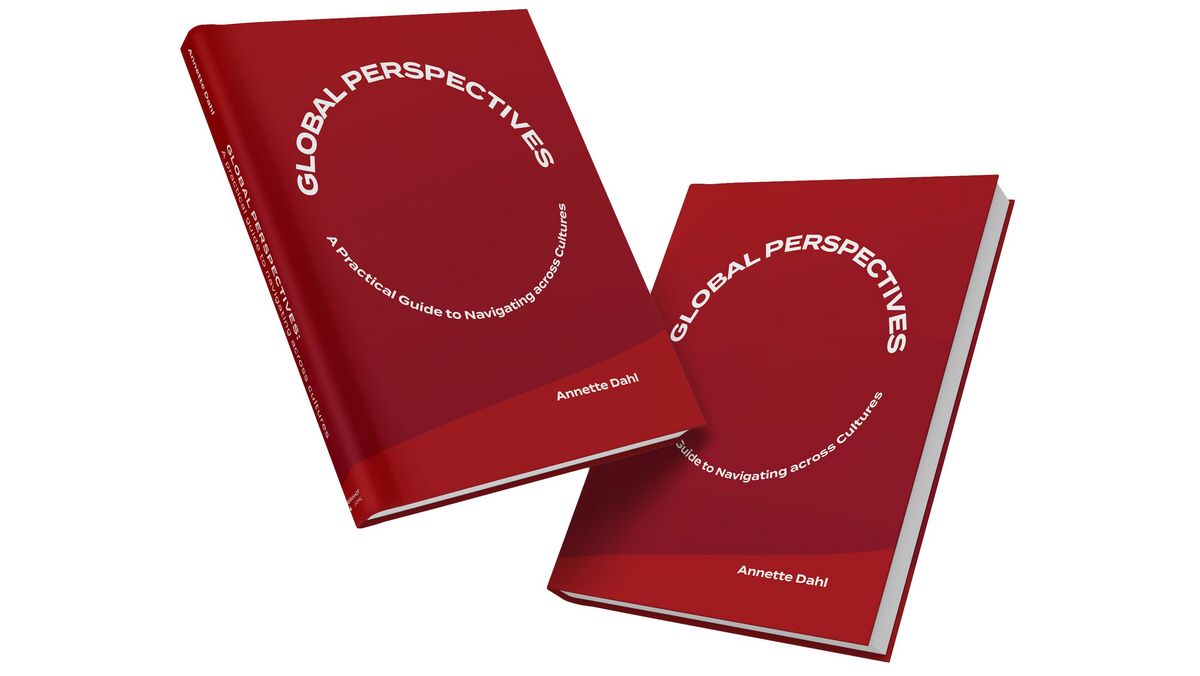
3 Assumptions You Should Challenge if You Want to Be Successful at Virtual Collaboration
Let’s get it out there right away: Virtual collaboration isn’t easy.
Maybe you’re used to having your colleagues sitting right down the hall. Now you’ll be part of a widely dispersed team that almost never meets face-to-face.
No shared lunches in the canteen or afternoon chats by the coffee machine.
Your comfortable framework is gone, so you need to create an entirely new framework for working together.
If the collaboration takes place across national borders, there are even more challenges. Different languages. Different time zones. Different understandings of agreements, planning and deadlines.
Nevertheless, distance work is a reality today for more and more people. Unfortunately, we find many companies are stuck in a series of assumptions about virtual collaboration that makes it even harder than it has to be.
Some things that seem impossible can actually be possible – if you dare to challenge your old habits and do things differently than you’re used to.
In this blog post, Rikke Lindekilde and Annette Dahl will focus on three common assumptions about virtual meetings and offer input on how you can improve your virtual collaboration by challenging these assumptions.
Rikke Lindekilde wrote her business PhD thesis focusing on virtual collaboration in co-operation with CfL, Grundfos and Aarhus University. Along with a group of executives and employees in Grundfos, she explored the mindsets and habits that characterized day-to-day distance collaboration, and how breaking old habits could create better results. [1]
Annette Dahl is CEO and chief trainer at C3 Consulting and has 10+ years of experience in training managers and employees in communicating and collaborating globally. She delivers an ever-growing part of her training services virtually, for instance to global teams with members scattered around the world. In addition, she, in co-operation with Rikke Lindekilde, delivers training that focuses on distance management and virtual global collaboration.
Assumption #1: It’s impossible to build up relationships when you only meet virtually
"If we’re going to build up relationships, we HAVE to meet face-to-face. We simply can’t get to know each other through virtual meetings.
"These types of statements are often seen as an established truth in companies that work globally: When you want to build relationships with your global colleagues, face-to-face meetings aren’t just the preferred way to do so. They’re seen as the only way to do so.
That means virtual meetings become very formal and task-oriented. When you assume in advance that it’s impossible to build up relationships, you figure you can just as well be efficient and get it over with as quickly as possible.
How you can challenge this assumption:
It’s certainly easier to get to know your colleagues when you sit next door to them. But sometimes it’s just the way it is – your team is located all over the globe. If there’s not a budget for regular face-to-face meetings, you may choose to down-prioritize personal relationships.
This is NOT a good solution. The less often you meet face-to-face, the more important your relationship work is. That’s because when you get to know each other, you also build up trust that is crucial for avoiding misunderstandings and creating results from a distance.
Instead, you should challenge the assumption that you can’t build up relationships through virtual meetings. Because it can be done.
Remember that virtual meetings can be many things besides the classic videoconference meeting.
As a Dane, you can take inspiration from your global colleagues from countries and cultures that put more of a focus on relationship building than Denmark does.
For example, in many places it’s common to chat. Chat is a more indirect and informal way to communicate than email. When you chat regularly with your global colleagues, it can strengthen your relationship and at the same time clear up small matters in your daily collaboration.
Some countries have their own chat forums, for example "WeChat" in China and "Kakao" in South Korea. These also function as social media. In other places, Facebook is the preferred place to meet colleagues in an informal framework.
Maybe you use social media mostly for private matters, and don’t want to mix your work life and private life by linking up with your global colleagues on social media. But keep in mind that in many countries there isn’t the same strong division between work and private life that there is in Denmark, and that social media and chat forums are a very useful tool when you want to build up relationships and trust worldwide.
Another good method is a good old-fashioned chat on the phone. But if you come from a very task-oriented culture like Denmark, you may need to change your telephone habits.
We often hear from non-Western employees who work in Danish companies’ subsidiaries that their Danish colleagues only call when something has gone wrong. It’s just not conducive to good collaboration.
Instead, get in the habit of calling once in a while for a chat. Just to "check in" and hear how things are going.
It doesn’t need to take much of your time. Maybe you have 5 minutes in the morning on the way from your car to the office when you can chat with a colleague in India. Or have a chat with your Brazilian colleague on your way back to the car, when it’s late afternoon for you and morning for them.
Start with small steps – they count.
Assumption #2: You can’t discuss issues in-depth at virtual meetings
Another widespread "established truth" is that you can’t have deep conversations during virtual meetings.
If we look again at a video conference meeting, for example in a global team, there’s often a tightly-packed agenda, and most of the time goes to informing the participants about the various points. If there’s any time for discussion, it can be hard to get input from global team members.
The conclusion becomes that virtual meetings are superficial and a bit of a waste of time. If we need to discuss something in-depth, we’ll have to meet face-to-face.
How you can challenge this assumption:
This assumption also has a basis in fact. If you just copy the way you usually hold meetings face-to-face, and try to hold the same meetings in virtual form, it can be very difficult to go into depth about things.
Ask yourself instead: What if we set up our virtual meetings in an entirely different way than we’re used to? What results would we achieve?
If you work in a Danish organization, you may be used to meetings of this type: A group of managers and employees gets together and discusses the points on the agenda. Everyone participates actively and comes with input along the way.
Now you’ve become a manager for a virtual, global team, and want to hold a virtual meeting. So, start by putting what you "always" do on the shelf and be very conscious of what you want to achieve with the meeting, and how you can best set up the meeting to achieve that goal.
Think about what type of framework will best support the meeting’s goals.
If you want a good discussion with input from all the team members, is it smart if five of you sit in a meeting room at the Danish HQ, while everyone else logs on from their individual computers around the world? Or will it produce a more equal discussion if the people in the Danish HQ sit individually too?
Consider, too, the cultural differences that you should think about when designing your meeting.
In Denmark, it’s common for employees to come with input, including critical input, even though the boss is present.
In many other places in the world, employees will see it as risky to come with any input in front of the boss, and absolutely unthinkable to offer critical input. (Read more about the background for these cultural differences in this article).
So when you plan virtual meetings in your global team, ask yourself if the goal is to primarily deliver INFO (where you will be giving information to the team), or to get INPUT (where you want to get information or feedback back from the team).
Let’s say that you are a manager in a Danish-based global company and have your office at the Danish headquarters. You need to create a new strategy, and you’d like to have input from your local sites all over the world. The whole thing will take place virtually.
So, try to do it this way:
- Start with a short shared web-meeting, where you tell about the strategy process and how the whole thing will take place. (INFO)
- Put aside a few hours where the local employees at your sites around the world can write their input, for example via a social network like Yammer. Make it as safe as possible for employees to offer input, for example by letting them work in small groups and offer their input as "We suggest…" instead of "I suggest…" (INPUT)
- End up with another shared web meeting, where you as a manager summarize the process. (INFO)
This example is borrowed from a Danish-based global company that used the process when creating a new strategy. With great success.
Assumption #3: I can be present in many places at once
The last assumption is one of the more unconscious types. Because if you ask someone directly if they can be many places at once, most will say "no."
But this is precisely what happens in many web meetings: As the meeting drags on, more and more participants start doing other things at the same time – checking emails, working on other projects, or just zooming out mentally.
The key word is being present.
The less present the meeting participants are, the worse the meeting will be. Bad meetings make it more likely that the participants will be multi-tasking in order not to waste time. It becomes a vicious circle.
How you can challenge this assumption:
Ask yourself: How can we create more presence, so we get more out of our virtual meetings?
A good place to start is experimenting with the framework for your meetings. Maybe your open office space isn’t the best place to log on to a virtual meeting?
Here’s an example of an exercise from a company where the leaders wanted to work closer with their global leadership team, but found it hard to do at a distance.
Two leadership colleagues sitting on opposite sides of the globe wanted to bounce ideas off each other. Instead of a traditional web meeting, both left their screens and found a place to lie down with their eyes closed. One told about his daily leadership dilemmas while the other listened and asked questions along the way.
When you lie down with your eyes closes, your conversational tempo is automatically slowed down. You are not as distracted and not tempted to multi-task. In other words, you are more present.
After having done the exercise several times, the leaders really liked it. They saw how they as global leadership colleagues could benefit from each other more in their daily work and at the same time strengthen their personal relationships.
There are a lot of other things you can do to create more presence during your virtual meetings.
If you as a meeting leader want to get input during a web meeting, be sure to always send the questions to the participants in advance, so they can prepare. If there are many participants in the meeting, plan how you can keep them engaged and involved throughout the entire meeting. And expect that you will need to use more time to prepare for virtual meetings than you do for face-to-face-meetings – at least at the beginning.
What are your own assumptions, when you work together virtually?
If virtual collaboration is part of your daily routine, you may recognize the three assumptions about virtual meetings we’ve discussed here.
There can also be other assumptions that are widespread in your organization – and might have you stuck in habits that are holding back your virtual collaboration.
If that’s something you’d like to change, ask yourself the following:
- Which habits – or perhaps bad habits – do we have when we’re working at a distance?
- Do we want to change some of those habits?
- And if we do, which alternative ways to do things can challenge the old habits?
Food for thought!
Would you like us to help you improve your virtual collaboration?
Read here about our tailored training programmes:
Or contact us for a chat about how we match your need for training, feedback or coaching.
References
[1] Rikke Lindekilde’s Ph.D.-dissertation is titled "Improving geographically distributed collaboration by transforming people’s implicit theories through experiential learning activities" (2016).
Rikke’s research has been inspired by Ghislaine Caulat, who has been researching virtual management since 2003.

